Let's hear it for the bogs
The UK's peatlands hold billions of tonnes of carbon – far more than its woodlands. Which is why the 12,000-year-old Border Mires of northern England are finally getting the restoration attention they're due.
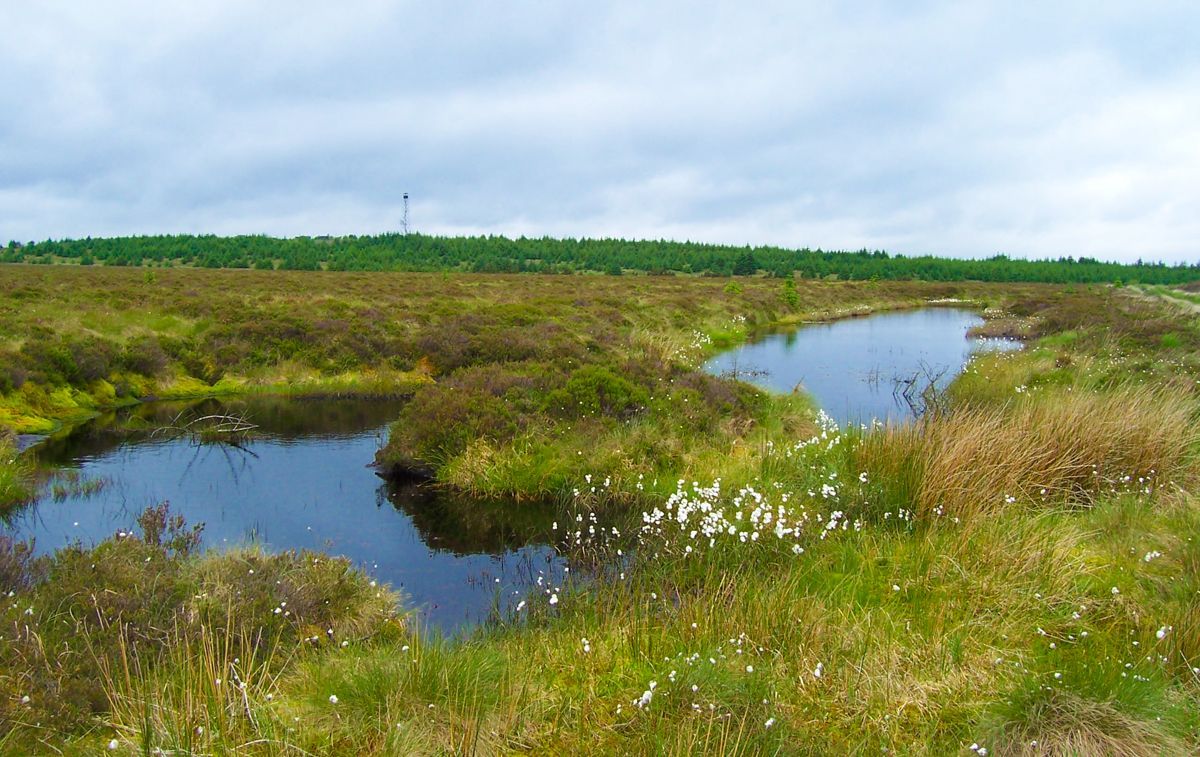
It was a clear summer morning when I joined Wayne Penrose, an ecologist with Forestry England, at Rabbit Crag, one of 55 blanket bogs that make up Northumberland’s Border Mires. This type of upland peat bog is known to spread across large areas, and these peatlands have been growing here in England's far north since the last ice age.
As we walked, you could see where the mulching machines had been busy clearing trees. Wayne pointed to a stump churned to barely an inch high. It’s not often you stroll deforested land, flecks of rotting wood underfoot, and think: This is a win for conservation. Yet the project to restore the mires is righting a wrong nearly a century in the making.
It all goes back to the 1920s, when post-war England began a tree-planting drive to boost its depleted timber supplies. “They didn’t just target Northumberland,” Wayne said. In the soggy north, however, conditions proved ripe for the non-native, fast-growing sitka spruce that make up half the UK’s commercial plantations. By the 1960s, the area would host Europe’s largest planted forest.
Long before then, this was reiver country, home to lawless gangs later known as moss-troopers. They raided local farms until the late 17th century, navigating the 15-metre-deep bogs with their stolen cattle in tow. After that, the moorlands went undeveloped, and to the post-war foresters it was empty land. Wasted. Or so they thought.
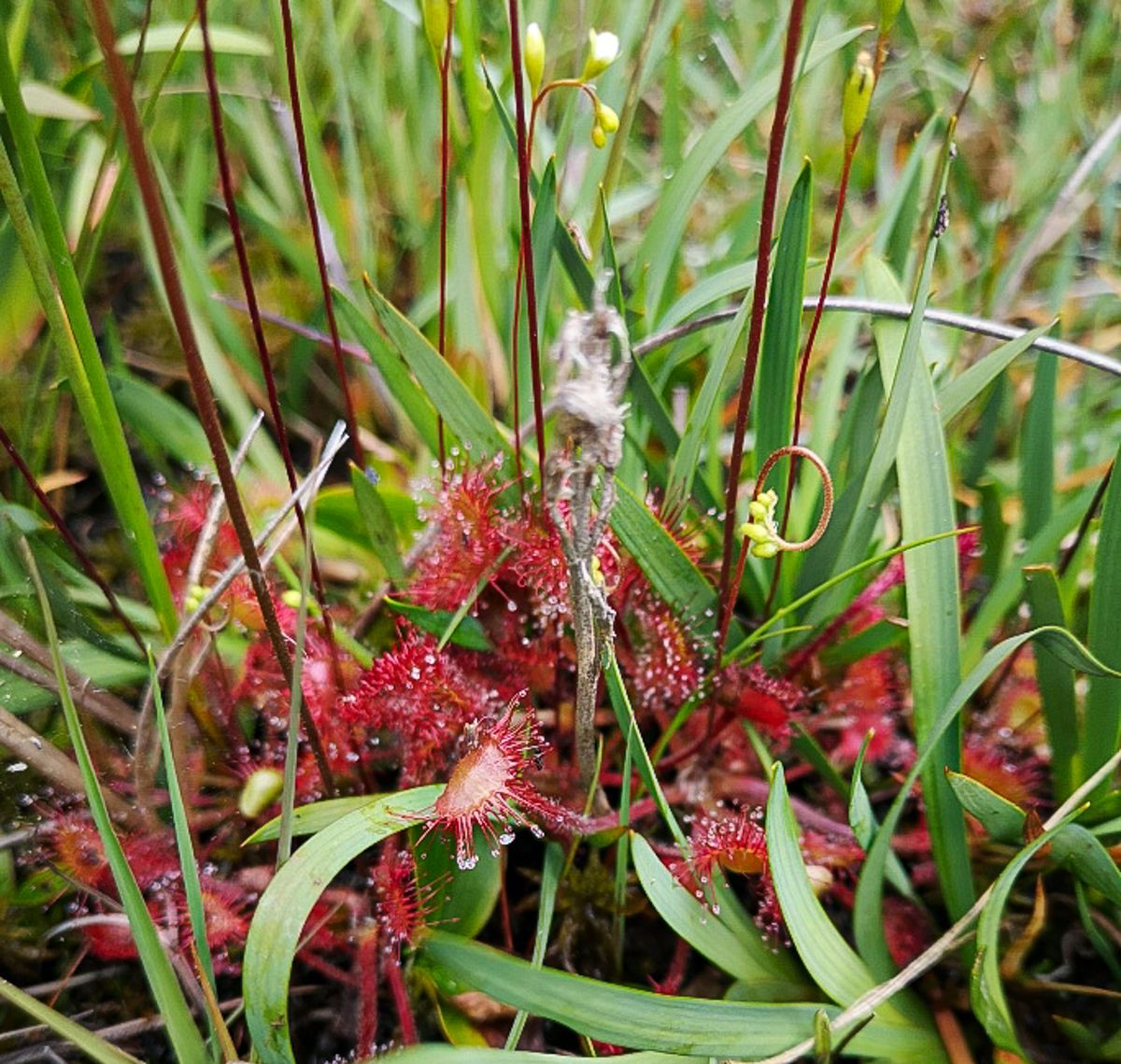
As Wayne and I picked our way across Rabbit Crag, surveying Forestry England’s restoration work, it seemed anything but empty. A stray roe deer skittered the edge of the debris, cautiously surveying us, and every so often Wayne stooped to admire a new piece of flora, firing off fanciful names: bog asphodel, hare’s-tail cottongrass, round-leaved sundew.
Underfoot, the going was springy. The mires’ native sphagnum mosses are what create the all-important peat here. The process is slow, yielding just a one-millimetre-thick layer each year. It also requires moisture. This is where commercial forestry takes its toll, as the land is drained for planting conifers that in turn leach the ground, lowering the water table and drying out the mosses and peat.
“The hardest part of the restoration is if the land has lots of trees on it,” Wayne explained. “In many sites, the bog is too deep and they can’t be removed – it would churn up the ground too much – so they’re mulched by machines adapted to the terrain. They leave little imprint, just debris that quickly rots. The trees are just part of it, though; the other job is to block any drains. Once the site gets wet, that’s when the important mosses start to grow again.”
So why now? Peatland isn’t rare here. The Border Mires may be the largest in England but the UK accounts for 13 percent of the world’s blanket bogs, a massive 23,000 square kilometres. Conservationists have long argued such areas are precious biodiverse sites, home to unique flora and insect life worth preserving. But more recent findings show there is a larger matter at stake.
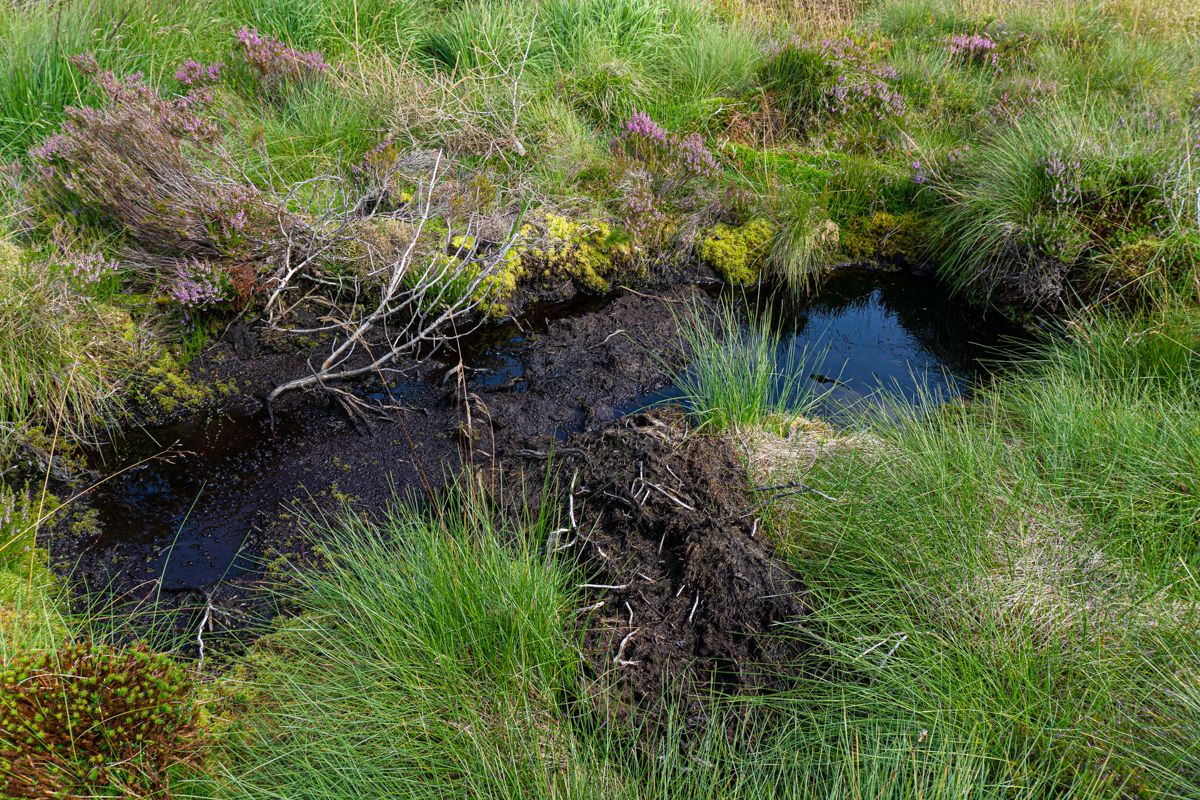
“We now know peat bogs are massive carbon stores,” Wayne said. Even more so than forests. The UK’s peatlands hold an estimated 3.2 billion tonnes of carbon, the same as all the woodlands of the UK, France and Germany put together. “But when they dry out,” he warned, “this starts to leak.”
The irony of cutting down trees to save the planet is lost on no one.
Before my Border Mires visit, I found myself sitting in the garage of Dr. Angus Lunn, a ginger biscuit in one hand while rain thumped on the driveway. In many ways this latest chapter in the life of the mires began with him, back in 1955 when, as a PhD student at Newcastle University, he began mapping the moorland of west Northumberland.
“We had no idea all these sphagnum bogs were even there,” he said, “then it gradually dawned on me over three years of study that there’s nowhere else quite like it in England.”
By the late 1960s he was involved with what would eventually become the Northumberland Wildlife Trust (NWT). “They were looking to acquire nature reserves, because that’s what wildlife trusts did in those days. I suggested the mires,” he told me. By 1971, they had leased eight sites from the Forestry Commission and set about restoring them.
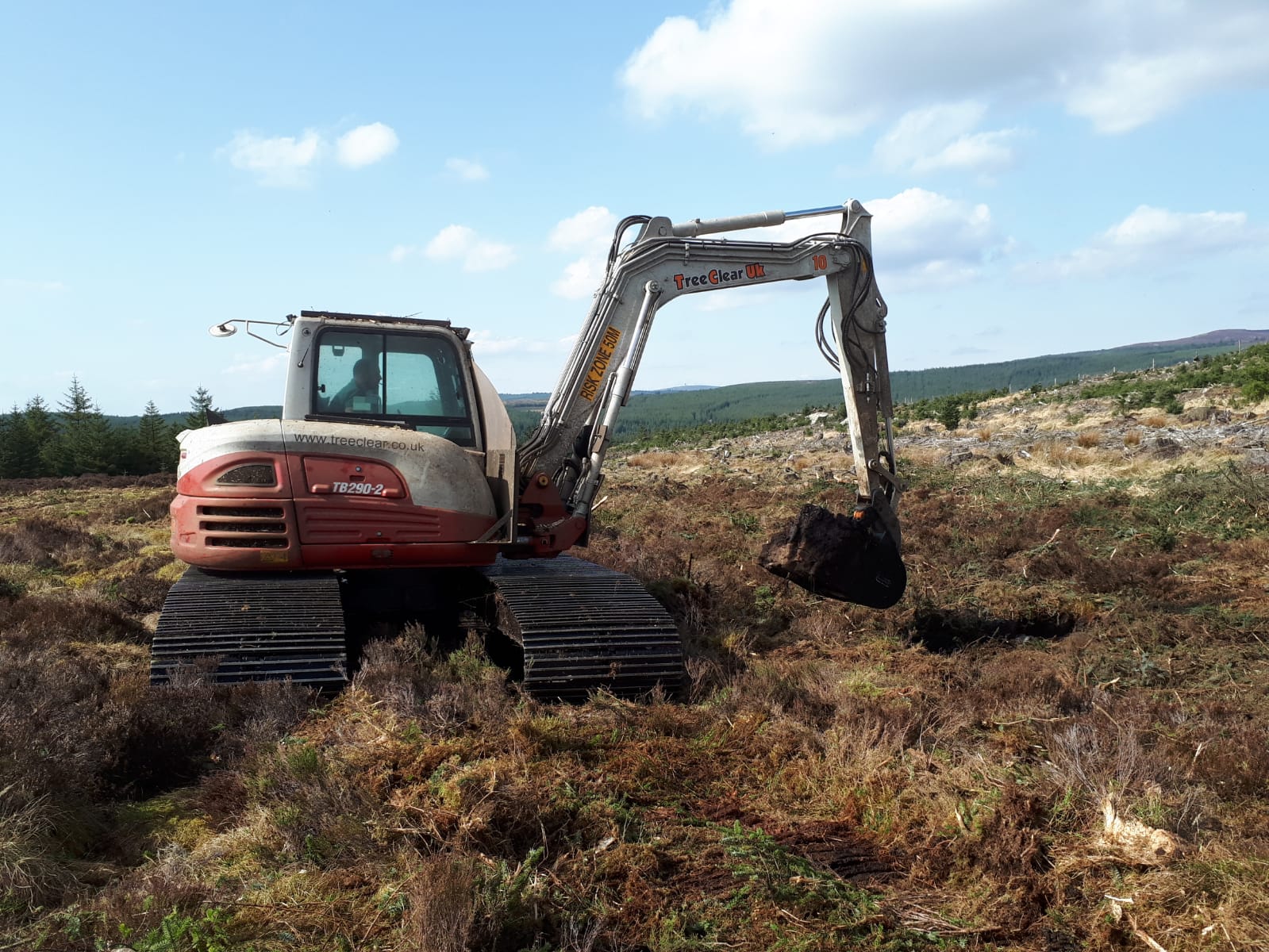
“It was hard work. Some mires had already been drained, using a plough to churn up a continuous turf,” Angus recalled. “We got gangs of volunteers armed with spades to put in dams every 20 metres by digging peat out from the upturned turf and pushing it into the drains.”
In the 50 years since, the NWT (of which Angus is vice president) has fought to restore all 55 Border Mires. During that time the Forestry Commission’s remit evolved, an overseeing committee (including Forestry England and the NWT) was formed, scientific discoveries were made, grants came and went, and £2-million was spent.
Angus still can’t believe it took so long. “The greatest irony,” he said, “is that all this money and time went into reversing something that should never have been in the first place.”
A few days later at Rabbit Crag, I was damp-footed but elated as Wayne and I stumbled into an area filled with bright purple heather, where the forest had been less dense. He showed me a peat dam, a former drainage channel now pooling with water and sandwiched between two large muddy plugs. It didn’t look like much, but this was life to the mires.
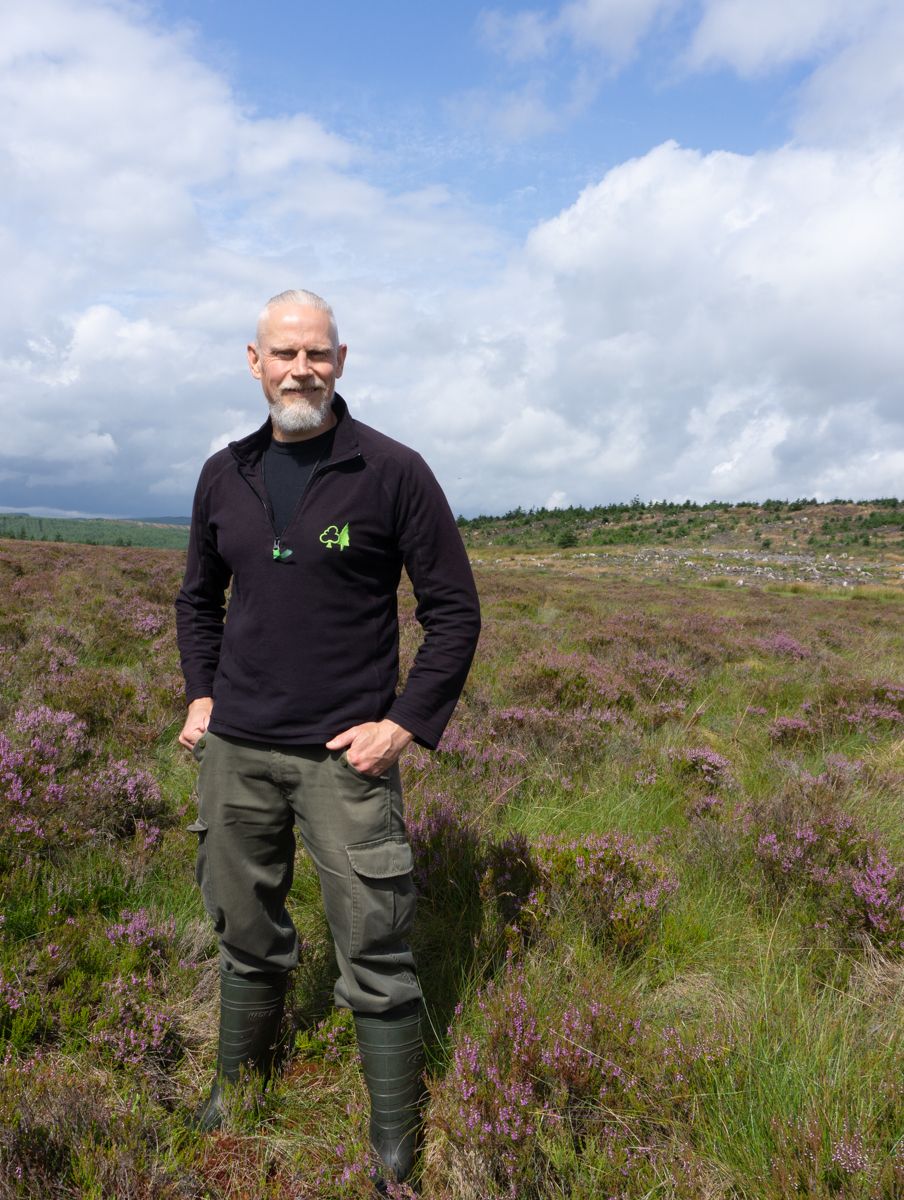
Even here though were signs of invasive sitka spruce saplings taking root where native conifers wouldn’t. Angus had told me the mire sites would always have to be monitored to stop them returning. Wayne concurred, and it’s clear that this is a project that has long to go. Human interference has left a debt to fill.
However, there is plenty to cheer. Decades on from those first reserves, things are changing fast. Over the past three years, Forestry England has carried out mulching, hand-cutting and ditch blocking on 11 mire sites over an area of 5.46 square kilometres, with more scheduled. It may have taken 50 years to get going, but now the pace is picking up.
As we turned to leave, I thought back to Angus. I’d asked him what he’d learned from all this, and he told me, “It helps to pursue an object for a long time.” Coincidentally, a wave of grants to restore the UK’s peatlands emerged last year, likely with the government’s pledge to be carbon neutral by 2050 in mind. As Angus’s story perhaps proves, if you pursue something long enough, sometimes the world eventually catches up.




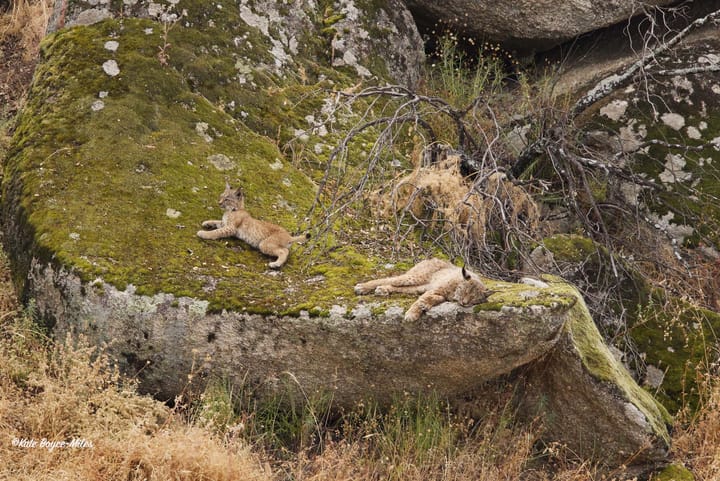
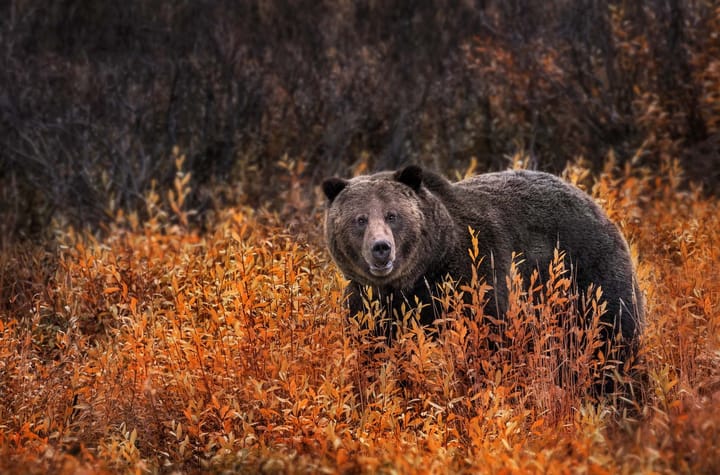


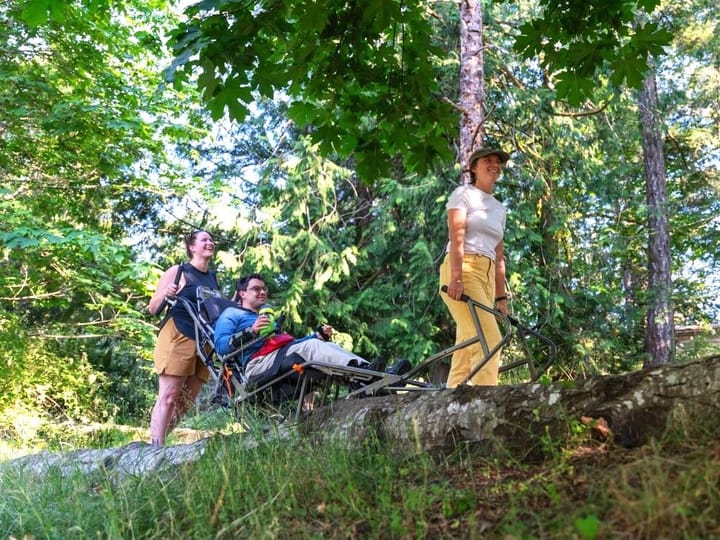
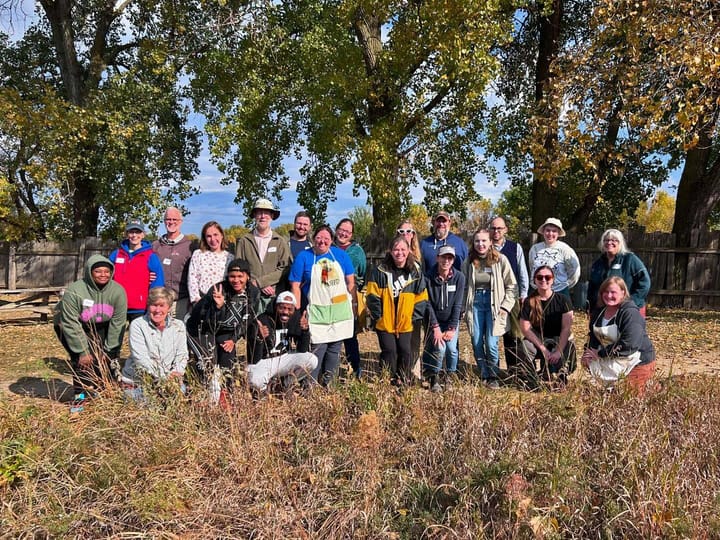

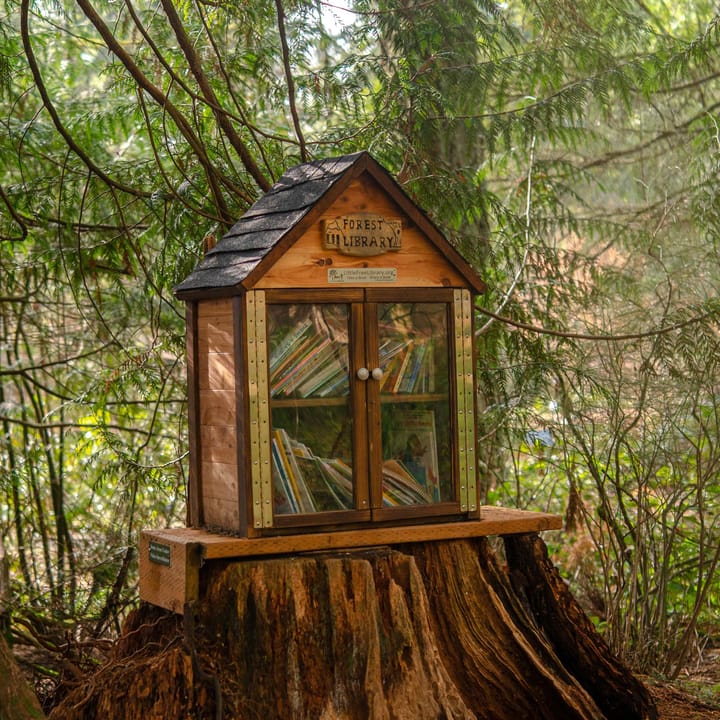
Comments ()